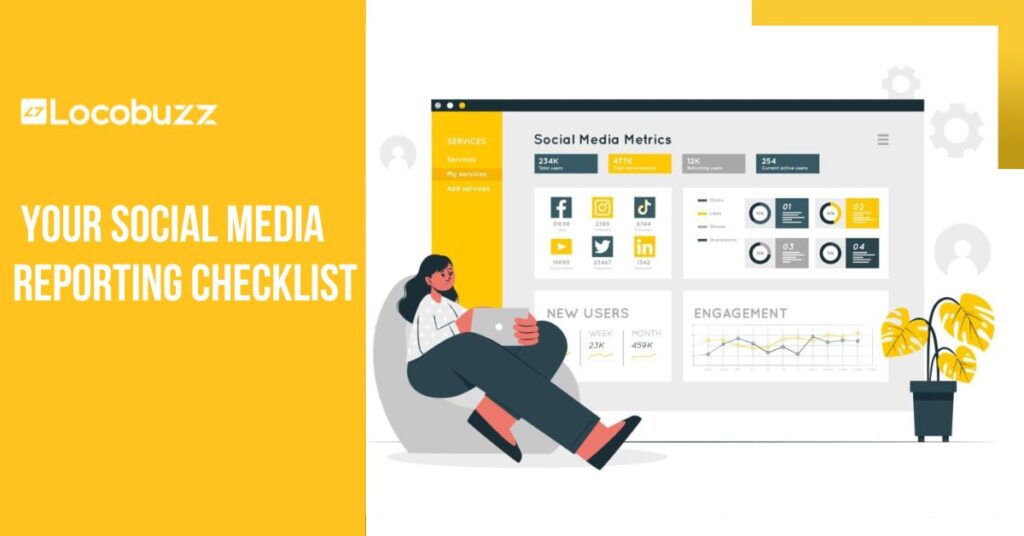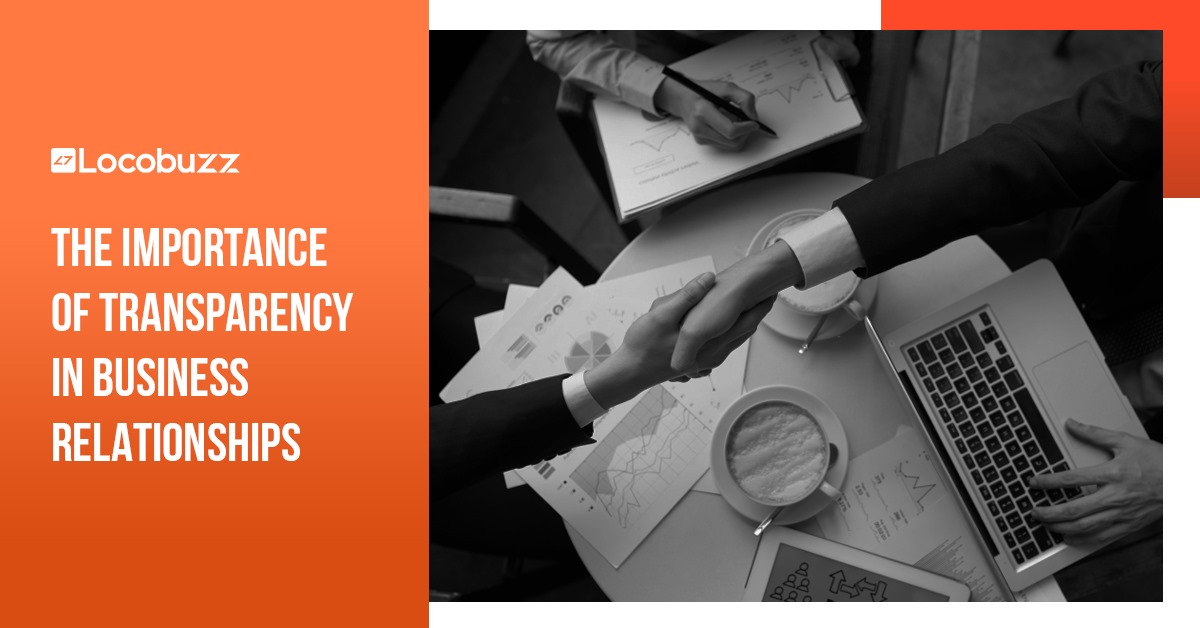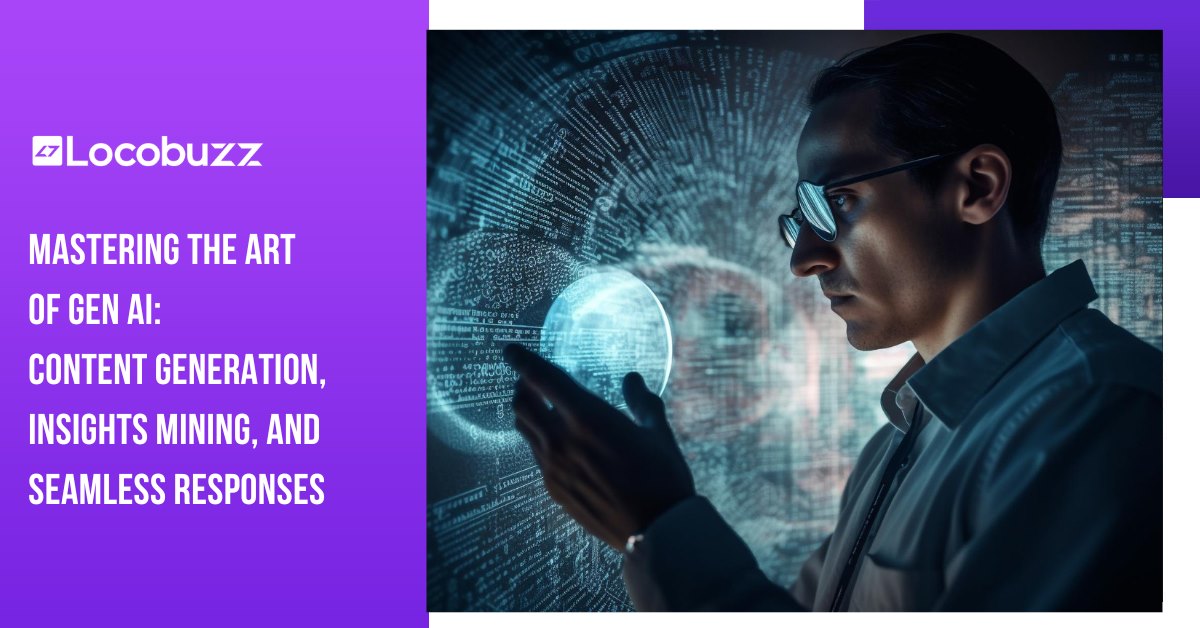Your Social Media Reporting Checklist

Businesses of every scale—from a small aromatherapy shop with bespoke offerings to large enterprises commanding attention across multiple platforms—face a common hurdle: understanding the impact of their social media efforts.
With an array of metrics at their disposal, the challenge lies not in the collection but in the interpretation and application of this data to foster growth and engagement.
As we move from focusing on single businesses to the wider world of digital marketing success, the importance of social media reporting becomes clearer. It’s not just about gathering data; it’s about creating a story that helps guide our decisions.
This is where your social media report can do the trick.
Why Do You Need a Social Media Report?
Social media reporting is your one-stop destination for your performance, analysis, and dare we say, rectification as well.
In a well-crafted social media report, one is more likely to understand the KPI of a certain campaign, where it broke all the barriers, where it fell short and which metrics truly helped bring the brand into the spotlight.
Hard to visualise?
Locobuzz can generate fully-fledged reports to help you understand what you might miss out on!
Here are some key elements of the report that can help.
Total Mention Count on a Brand Post
Sentiment Analysis
Channel-Wise Impression
And so much more.
In this report, you can figure out:
The overall result of your campaign.
Customer reaction and sentiment towards the campaign (comment tracking)
Best time to engage.
Your demographic.
Overall brand perception from your customer’s point of view.
Simply put, you need a social media report to help you realise your ROI. However, the constituents of your social media report is supremely important to help you realise your ROI.
What Should Your Social Media Report Include?
Apart from the social media metrics you should be tracking, your report needs the following to be helpful for your leadership team to track growth.
While we have already discussed the important metrics that should be a part of your strategy (read our blog!), let’s talk about the elements that should be included but are often overlooked.
Objective
The objective of your social media campaigns should be predetermined. Why? Because it prevents you and your team from shooting in the dark.
By setting clear goals upfront, you create a focused framework for your team’s activities. This direction is vital for ensuring that every action taken, every content piece created, and every dollar spent contributes towards a unified purpose. It’s about having a clear vision of what you want to achieve, whether it’s increasing brand awareness, driving sales, engaging with your audience, or launching a new product.
Moreover, these objectives are essential when communicating with your leadership team. They provide a rationale for the resources you’re employing – be it time, money, or human capital. When you can link your activities directly to predetermined goals, it becomes much easier to justify your strategies and expenditures. It shows that your actions are not vague but are part of a calculated effort to achieve specific, measurable results.
Investment in social media activities
Your investment in social media activities primarily outlines your monetary and resource stakes included in your social media strategy for the month, quarter or even the year. For instance, it can be human resources like a social media manager, copywriter and designer, and on the other hand, it may also include different tools you are deploying for the overall strategy.
Human Resource Investments: This includes the staffing required for your social media strategy, such as a social media manager, copywriter, designer, content strategist, and other roles. Each of these roles plays a distinct part in crafting and executing your social media presence. For example, a social media manager might oversee the strategy and coordinate efforts across platforms, while a copywriter and designer work on the content creation aspect. Highlighting these roles in your report underscores the human capital invested in making your social media efforts successful.
Tool and Technology Expenditure: In addition to human resources, the investment in various tools and technologies is a significant part of your social media strategy. This may include content management systems, analytics tools, scheduling software, and other digital tools that facilitate the execution of your strategy. These tools are essential for tasks like tracking engagement, scheduling posts, analysing audience demographics, and measuring the overall effectiveness of your social media efforts.
Financial Outlays: Apart from personnel and tools, other financial outlays such as advertising costs, subscription fees for premium tools, and expenses for any external agency support should be accounted for. These costs are direct investments into expanding reach, gaining insights, and enhancing the quality of social media activities.
Setting the Right Expectations: By including a detailed breakdown of these investments in your social media report, you set clear expectations about what is being put into the social media efforts. It helps stakeholders understand the scope and scale of the operation and why certain results are expected.
Justifying the Expense: This section also plays a vital role in justifying the expenses incurred. By correlating investments with outcomes (such as increased engagement, lead generation, or brand awareness), you can demonstrate the return on investment (ROI) of your social media activities. This is essential for evaluating the effectiveness of your strategy and for securing or adjusting future budgets.
Adding these to your social media reports helps you set the right expectations as well as justify the expense that may incur.
- Expectations
Very similar to objectives, but here we dive a little deeper. Your expectations highlight the projected future of particular investments and activities in a particular timeline. For instance, your expectations can include:
- Increase followers by 3x the current number.
- Increase the diversion rate to the shop link by 50% in 6 months.
- Enhance the brand engagement rate by 25% by the end of quarter.
Your expectations help you determine your success parameters and determine the quality of the performance in a set timeline.
- Delivered Results
As the name suggests, delivered results display the success or failure of your social media efforts. However, your delivered results are highly dependent on dynamic elements like attrition within your team, and failure of the tool, to name a few.
Key points to consider when elaborating on Delivered Results in your social media report include:
Impact of Team Dynamics: The performance and consistency of your social media team play a crucial role in the results delivered. Attrition, or turnover within the team, can significantly impact your social media activities. For instance, losing a key team member might slow down campaign execution or content production, affecting your overall social media performance.
Quantifiable Metrics: Delivered results should include quantifiable metrics like growth in followers, engagement rates, conversion rates, and ROI from social media campaigns. These metrics give a clear picture of the success or failure of your strategies.
Comparison with Goals and Benchmarks: The report should compare the delivered results with the initial goals and industry benchmarks. This comparison helps in understanding where your efforts stand in relation to your expectations and the industry standard.
Analysis of Successes and Failures: It’s not just about stating the results; a good report should also analyse why certain strategies were successful and others were not. This analysis could include factors like content relevance, campaign timing, audience targeting accuracy, which channels are working (or not), and even external factors like market trends or competitor activities.
Adaptability and Future Recommendations: Finally, the report should reflect on how these results shape future strategies. It should suggest adjustments or new approaches based on what has been learned from the successes and failures. This section is critical for continuous improvement and adaptability in your social media approach.
Incorporating these elements into the Delivered Results section of your social media report provides a comprehensive view of your efforts’ effectiveness and lays a foundation for future strategies and improvements.
Time-Specific Goals
Setting goals is an essential aspect of effective planning and strategy. But it’s not just about what you want to achieve; it’s equally important to understand the time and resources necessary to reach these objectives. This understanding significantly influences the value and impact of your decisions.
For example, let’s consider some time-specific goals you might set:
Increase Organic Traffic: You aim to boost your website’s organic traffic by 50% within the first six months. This goal is not just ambitious but also time-bound, which helps in creating a focused strategy for SM and content marketing. You would need to allocate resources accordingly, plan out your SM strategies, and perhaps even engage in content marketing campaigns within this timeframe to meet the target.
Establish a Social Media Team: Another goal could be to form a dedicated social media team within a month. This is a shorter-term goal, requiring immediate actions like hiring skilled professionals, setting up communication channels, and aligning them with your company’s social media strategy. It’s a critical step to ensure that your social media presence is managed efficiently and effectively.
Set Up a Social Media Content Engine: You might also aim to establish a fully operational social media content engine within two months. This goal involves not just forming a team but ensuring they are equipped to produce and distribute content regularly. It means putting in place processes for content creation, approval, scheduling, and analysis. This goal ensures that your social media strategy is not just initiated but is also sustainable and scalable.
By setting such time-specific goals, you create a clear roadmap for your team. It helps in allocating resources effectively, prioritising tasks, and measuring progress over time.
This approach fosters a sense of urgency and focus, making it more likely that your team will achieve the goals within the set timeframe. It also allows for timely adjustments if things are not going as planned, ensuring that your strategies remain flexible and responsive to changing circumstances.
Social Media Reporting Checklist at a Glance
To ensure your social media report is comprehensive and actionable, include the following elements:
- Objective: Define clear goals for your social media activities to guide your team's efforts and justify resources used.
- Investment in Social Media Activities: Detail your investment in human resources, tools, and technology to set expectations and justify expenses.
- Expectations: Outline specific, measurable expectations for your investments and activities within a set timeline.
- Delivered Results: Analyse the performance of your social media strategy against your objectives and industry benchmarks.
- Time-Specific Goals: Establish clear, time-bound goals to prioritise tasks and measure progress effectively.
The Power of Automated Social Media Reports
A well-crafted social media report is not just a document; it’s a strategic tool that offers deep insights into your social media performance. It helps you understand the impact of your campaigns, the sentiment of your audience, and the effectiveness of your content across different channels.
This is why automated social media reports are game-changers for businesses.
They streamline the process of data collection and analysis, saving valuable hours that would otherwise be spent manually compiling information. By leveraging automation, companies can quickly identify trends, measure campaign effectiveness, and make informed decisions to boost efficiency and drive growth.
Automation significantly improves each aspect of social media reporting:
- Data Collection: Automated tools gather data from various sources in real-time, ensuring accuracy and completeness. This eliminates the need for manual data entry and reduces the risk of errors or omissions.
- Data Analysis: Automation processes vast amounts of data quickly, allowing for more in-depth analysis and identification of patterns or anomalies that may have gone unnoticed with manual methods.
- Time Efficiency: By automating repetitive tasks such as data collection, aggregation, and report generation, businesses save valuable time that can be redirected towards strategic planning and execution.
- Insight Generation: Automated reporting tools not only compile data but also provide actionable insights and recommendations based on the analysis, empowering businesses to make data-driven decisions effectively.
With this knowledge, you can fine-tune your strategies, enhance engagement, and ultimately, realise your return on investment (ROI).
The integration of automated reporting tools, like Locobuzz, transforms raw data into actionable insights, enabling businesses to focus on strategy and execution rather than getting bogged down by the intricacies of data management.
Reporting is Crucial for Your Brand
Reporting leads to accountability and accountability may lead to those results you’re looking for. Your social media report is the blueprint for your brand or a map if you may say so, designed to guide you to your objectives without being astray and losing precious time and resources.
Earlier, folks had to create these reports by hand, spending hours on the activity.
However, its now time to automate the complete process and use the final reports for better decision-making. Locobuzz can take care of the automated reports for you!
If you’re looking for a solution that can manage your data for you, present it in a unified structure, and even present it in a crisp report format, Locobuzz can be your aid.






















